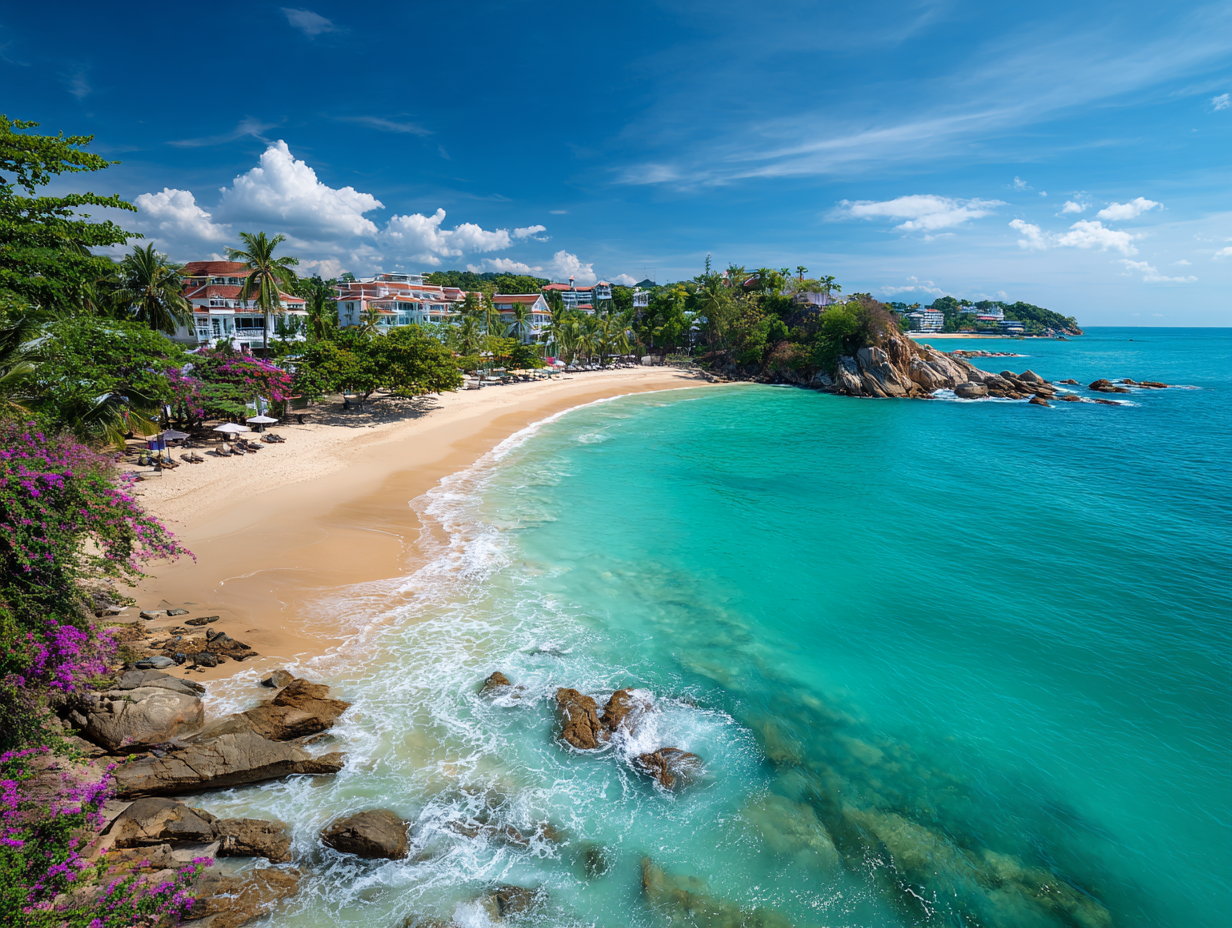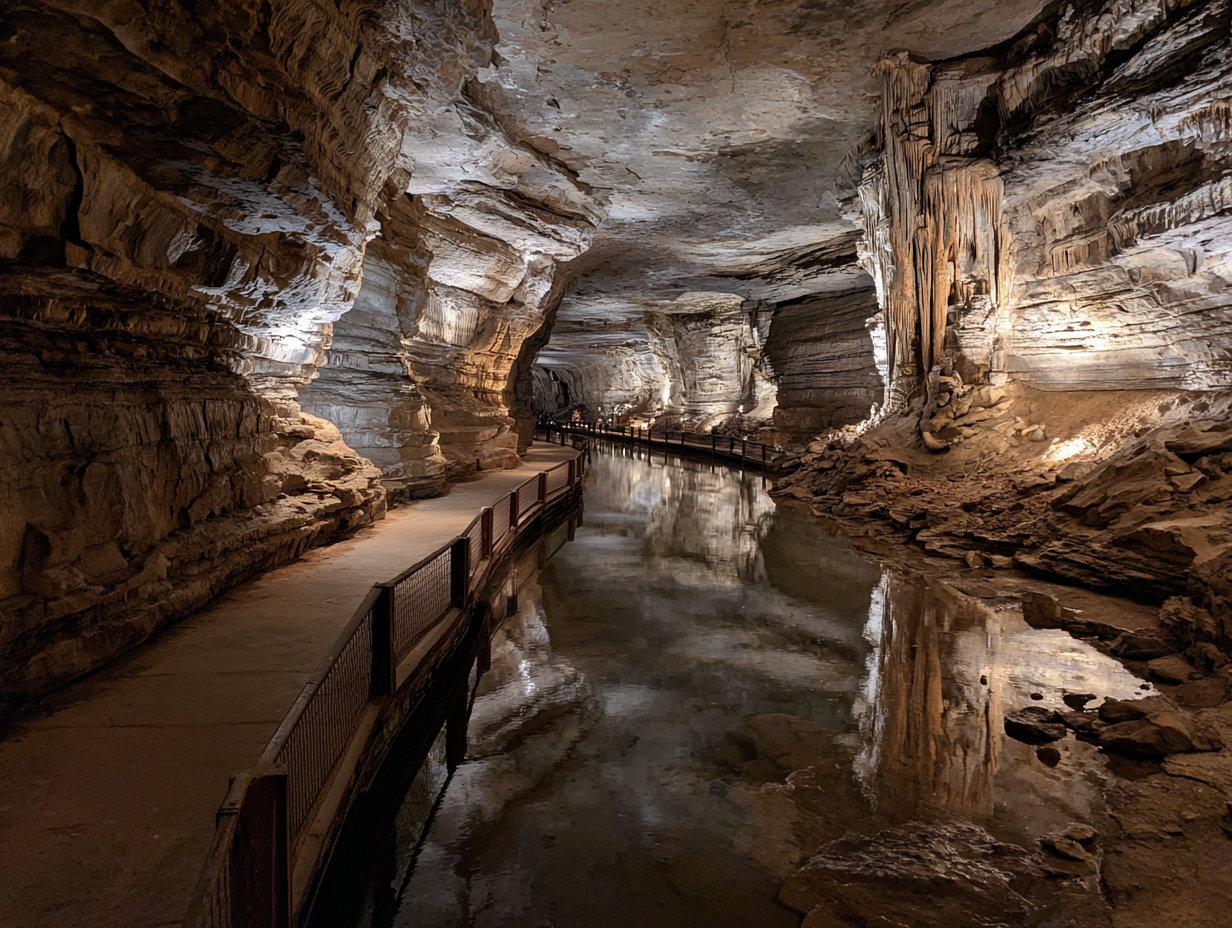With smart planning and a little flexibility in travel dates, these beach destinations welcome every traveler to enjoy world-class sun and sand—without maxing out their credit card.
Craving a beach tan but short on budget? Travelers these days most likely hunt for budget-friendly destinations.
To explore more without spending much, factor in the distance between the beach and the hotel.
While hotels at the prime beach destinations tend to go higher just for a night, leveraging online platforms to find beachfront hotels and beach house rentals under your budget is a smart choice, as suggested by Melanie Fish, Hotels.com and Vrbo travel expert.
Based on the data revealed by Expedia, here are a few recommendations for beach vacation destinations for low-cost experiences.
Cheapest Beach Destinations To Explore in 2025
From the sugar-soft sands of Florida beaches to Thailand’s tropical vibes and the endless charm of Greece, here are the beach destinations to enjoy the sun, surf, and serenity without breaking the bank.
1. Panama City Beach, Florida
Stretched 27 miles along the Gulf of Mexico shoreline, Panama Beach is a surprisingly affordable Florida beach destination to visit.
Known for its emerald-green waters and sugar-white sand beaches, Panama is home to the world’s most beautiful beaches that offer endless recreational and adventurous activities for solo travelers and families alike.
Food & Drinks: $20-$50 per person
Vacation Rentals: $185-$200 per night
Unique Experiences
- Kayak or collect seashells at Shell Island and spot diverse local wildlife, or snorkel at St. Andrews State Park.
- Capture the beach’s bird’s eye view from a SkyWheel glass gondola, lounge on Shipwreck Island’s lazy river.
- Shop, dine, and enjoy eclectic nightlife at Pier Park beachfront complex.
- Go boating and fishing at Cam Helen’s Dune Lake, and walk with your dog on the pet-friendly trails.
- Unwind at Rosemary Beach while kids build sandcastles, then treat yourself to a rejuvenating spa.
Travel Tip: If visiting in October, don’t miss the week-long Schooners Lobster Festival and Tournament.
2. West Palm Beach, Florida
Often overshadowed by Miami, West Palm Beach offers a similar sun-kissed experience by the sandy beaches without putting a heavy price tag on fun. According to Expedia, a travel booking company, the nightly rate for hotels in West Palm Beach averages under $200 for a night.
Located along the Atlantic Ocean coastline, this Wall Street South beach is the third-largest city in South Florida, adorned with exquisite shops, fine dining, bustling entertainment districts, and the nation’s most intriguing waterways.
Food & Drinks: Less than $15 to $100 per person, may vary with restaurant type
Vacation Rentals: $175-$200 per night
Unique Experiences
- Cruise the Intracoastal waterways and visit historic coastal towns along the Palm Beaches.
- Climb 105 steps of Jupiter’s Lighthouse, then hike along Peanut Island’s trails and witness a Cold War bunker.
- Stroll through the streets of Clematis District and City Place for exquisite shopping, fine dining, bars, and Broadway-style shows, then catch live music on Thursday nights.
- Explore the jazzy Friday night with art, film, and artifacts at the Norton Art Museum’s ‘Art After Dark’ .
- Food lovers can browse Northwood Village for creative bites or grab the best burgers and shakes at Relish & More.
3. Outer Banks, North Carolina
The Outer Banks of North Carolina offers a welcoming atmosphere far from bustling city crowds and overrun vacation spots.
The islands are a popular beach destination with plenty of vacation rental options in each town at affordable rates, making them the cheapest beach vacation place to visit.
These 200-mile-long barrier islands are renowned for their open-sea beaches, shipwreck diving sites, lighthouses, and historical landmarks.
Food & Drinks: Based on dining choices, $50-$100 a day
Vacation Rentals: $185-$200 per night
Unique Experiences
- Enjoy sandboarding across the East Coast’s largest sand dunes at Jockey’s Ridge State Park.
- Enjoy the panoramic ocean view from the observation deck of North America’s tallest lighthouses, Cape Hatteras and Bodie Island.
- Learn about the aviation history at the Wright Brothers National Memorial.
- Chase the wild horses on the sands of Corolla or go fishing at Jennette’s Pier.
- Watch America’s longest-running outdoor drama, unfolding the region’s mysterious history and lore.
- Experience North Carolina’s pristine coastline from above via kiteboarding, paragliding, and hang-gliding.
4. Fort Lauderdale, Florida
Often referred to as the ‘Venice of America,’ Fort Lauderdale is a more affordable urban beach destination to visit with family and friends.
Located an hour away via flight, Tampa Bay and Miami Beach are other destinations that put you near beaches while offering affordable vacation rentals and hotels inland.
Food & Drinks: Based on dining choices, $50-$100 a day
Vacation Rentals: Within $250 per night
Unique Experiences
Explore the hiking trails, rent kayaks, or simply soak up the sun in the urban oasis of Fort Lauderdale beaches.
Visit Fort Lauderdale’s oldest surviving structure, the Stranahan House, or Tampa Bay History Center, for a glimpse into the city’s rich historic past and cultural heritage.
Perfect for families, Tampa Bay offers themed-park zoos and aquariums, exhibiting diverse marine and wildlife. Discover Ybor City, echoing Cuban heritage, cigar factories, and dynamic nightlife.
Whereas Miami Beach is packed with an array of activities, from water adventures and architectural wonders to cultural tours and leisure experiences. Indulge in the eclectic night scenes of Miami Beach at recreational clubs, rooftop bars, and beachfront parties.
5. Pattaya, Thailand
Pattaya is a lively and often crowded beach destination, known for its water sports and a bustling beachfront space brimming with inexpensive vacation rentals, hotels, restaurants, and shops.
With an average rate of $91 for a hotel a night in August, this is one of Thailand’s cheapest beach destinations to visit when considering savings. Located on the eastern Gulf coast, this quaint fishing village is lined with high-rise condos, resort hotels, high-end bars, and clubs.
Food & Drinks: $1-$100, depending on the dining options
Vacation Rentals: Under $150 per night
Unique Experiences
- Visit the ‘Sin City,’ Pattaya, for eclectic nightlife and fun parties by the beaches.
- Explore bars and clubs, displaying cabaret shows, like the ladyboy’s Tiffany Show.
- Indulge in various water sports, including windsurfing, skiing, snorkeling, and sailing at popular beaches.
- Pattaya’s Sanctuary of Truth, an ancient, intricate wooden temple, and Mini Siam, a miniature park, housing replicas of the world’s famous landmarks.
- Shop like a local and eat delish Thai cuisine like a local in the Floating Market.
6. Phuket, Thailand
Thailand’s popular beach destination, Phuket, is another cheapest beach destinations with an average of $122 for vacation rentals and hotels for a night. Built in 1903, Phuket is Thailand’s largest island, along with 32 nearby islands.
The island is known for its pristine beaches, exotic wildlife, rich cultural attractions, and dynamic wildlife, a perfect cheap beach getaway for family and backpackers alike.
Food & Drinks: Based on dining choices, $16-$100 a day
Vacation Rentals: Within $200 per night
Unique Experiences
- Explore Phuket’s deep-rooted past in the historic streets of Old Town, featuring ancient relics and Sino-Portuguese historical landmarks.
- Spot a whale shark on a once-in-a-lifetime diving experience in the Similan Islands. Marvel at Thailand’s largest Buddha sculpture on Nakkerd Hill and enjoy the sunset views from the top.
- Witness the diverse marine life at Phuket’s Sirinat National Park, a home for sea turtles.
- Visit the famous Koh Tapu island, popularly called ‘James Bond Island.’
- Ride a longtail boat to Coral Island or try snorkeling in the clear water of Koh Khai.
7. Greek Islands
The North Aegean Islands are a group of Greek Islands, encompassing several main and smaller islands located near the Turkish Coast. Lesbos, Chios, Lemnos, and Agios Minas are but a few islands to explore the Greek island experience at very affordable rates.
The average nightly rate during mid-August is recorded as not more than $190 for hotels and vacation rentals.
Discover the unique blend of Greek and Turkish-influenced architecture, culinary, and traditional scenes through the islands’ diverse landscape and unique cultural and historic heritage.
Food & Drinks: Based on dining choices, $50-$100 a day
Vacation Rentals: Within $250 per night, based on accommodation choice
Unique Experiences
- Experience the rustic life in Lesbos, the Island of Poets, famous for its traditional villages and a Petrified Forest.
- Visit the ancient temples, white-sand beaches, and local wineries of Samos Island.
- Bash the dunes of the only desert in Greece, Lemnos, home to diverse wildlife.
- Discover the ancient ruins amid lush forests in Thassos island.
- Hike along the rugged mountainous trails of Samothrace, offering rejuvenating spots of hot springs and the Sanctuary of Great Gods.
- Experience a slow-paced life along the traditional villages of Ikaria, offering beautiful views of untouched natural wonders.
8. Puerto Plata, Dominican Republic
Nestling in the northern coast of the Dominican Republic, Puerto Plata is another cheap beach destination closer to the United States, brimming with rich history and vibrant culture.
Famously known as the ‘Silver City,’ the region’s cultural landmarks, stunning beach landscapes, and silver trading history showcase its unique Caribbean charm, offering a diverse range of activities for a fun beach vacay.
Food & Drinks: Based on dining choices, $25-$50 a day
Vacation Rentals: Within $250 per night
Unique Experiences
- Take a swim in Playa Dorada’s emerald blue waters or visit Sosua Beach for snorkeling.
- Ride the Caribbean’s only aerial tramway up the slopes of Mount Isabel de Torres, offering sweeping views of the sparkling Atlantic Ocean.
- Explore a beautiful botanical garden, exhibiting a smaller version of Rio de Janeiro’s Christ the Redeemer Statue.
- Dive into adventure in the cascading series of Waterfalls of Damajagua. Take a leisurely stroll along the Malecon scenic oceanfront boulevard, lined with street vendors, local cafes, and cultural landmarks.
- For a family-friendly atmosphere, Cofresi Beach is an ideal spot to enjoy a sunset or indulge in a fun beach activity.
With smart planning and a little flexibility in travel dates, these beach destinations welcome every traveler to enjoy world-class sun and sand—without maxing out their credit card.



